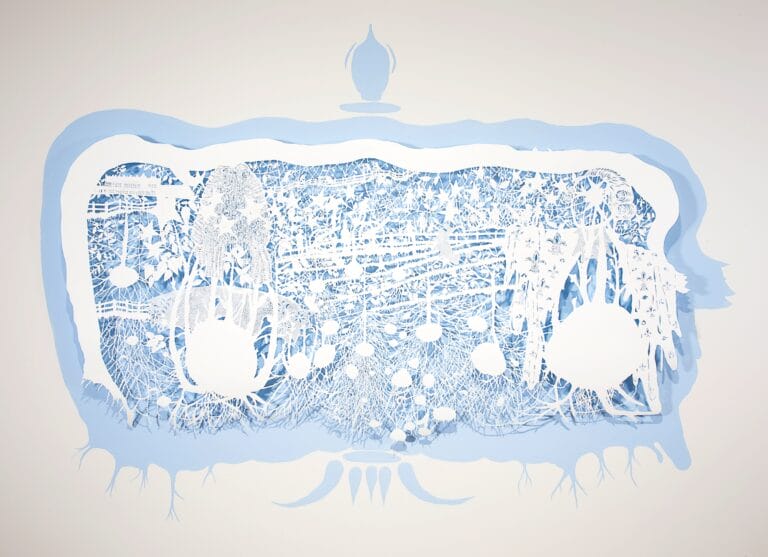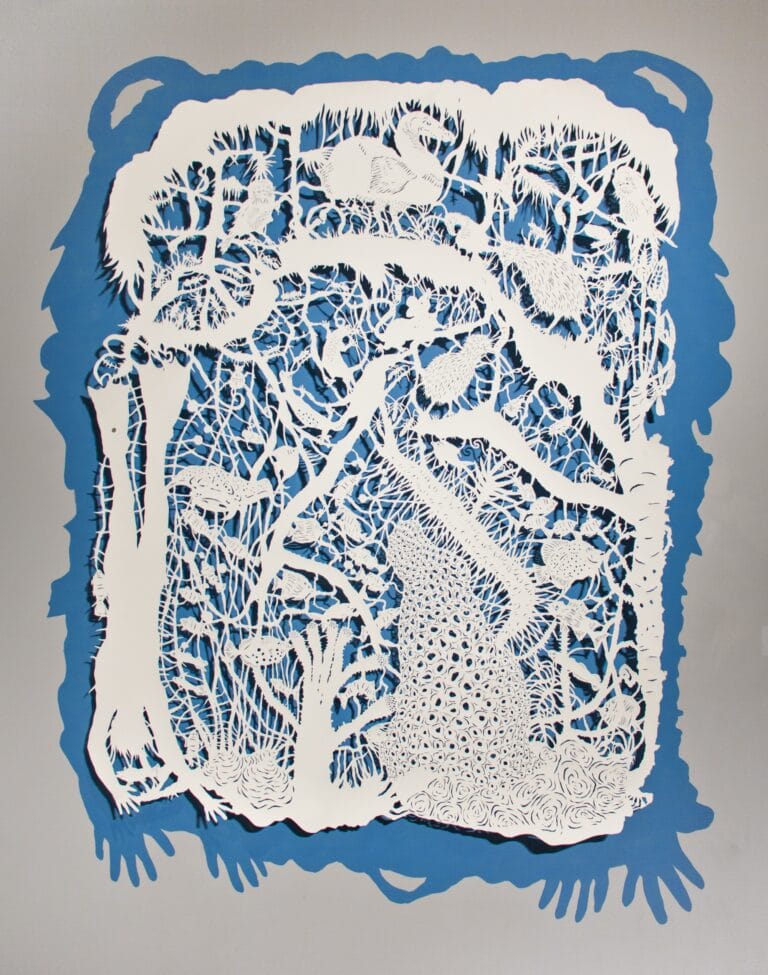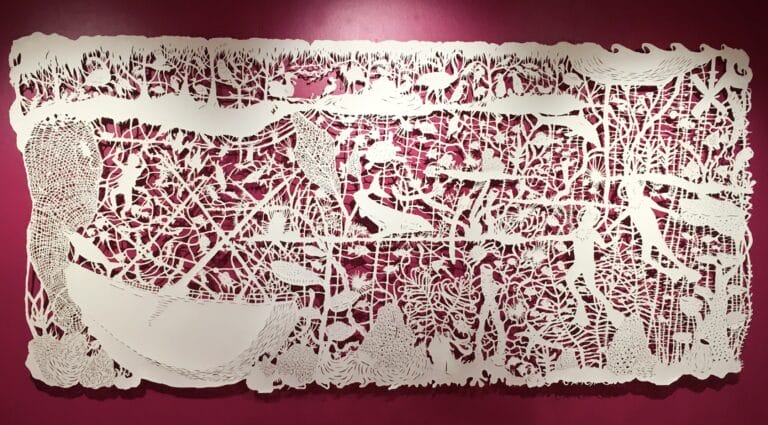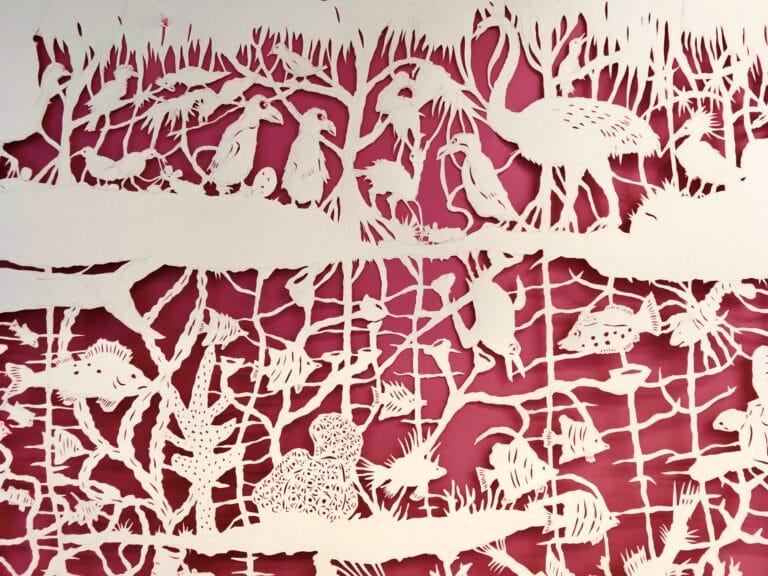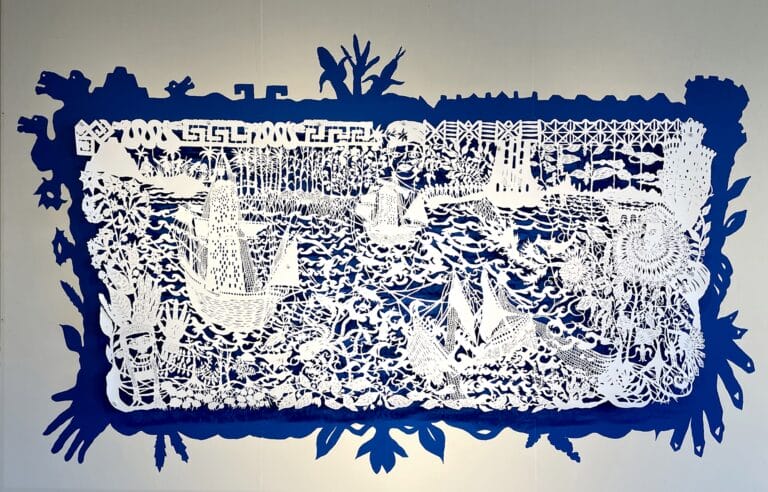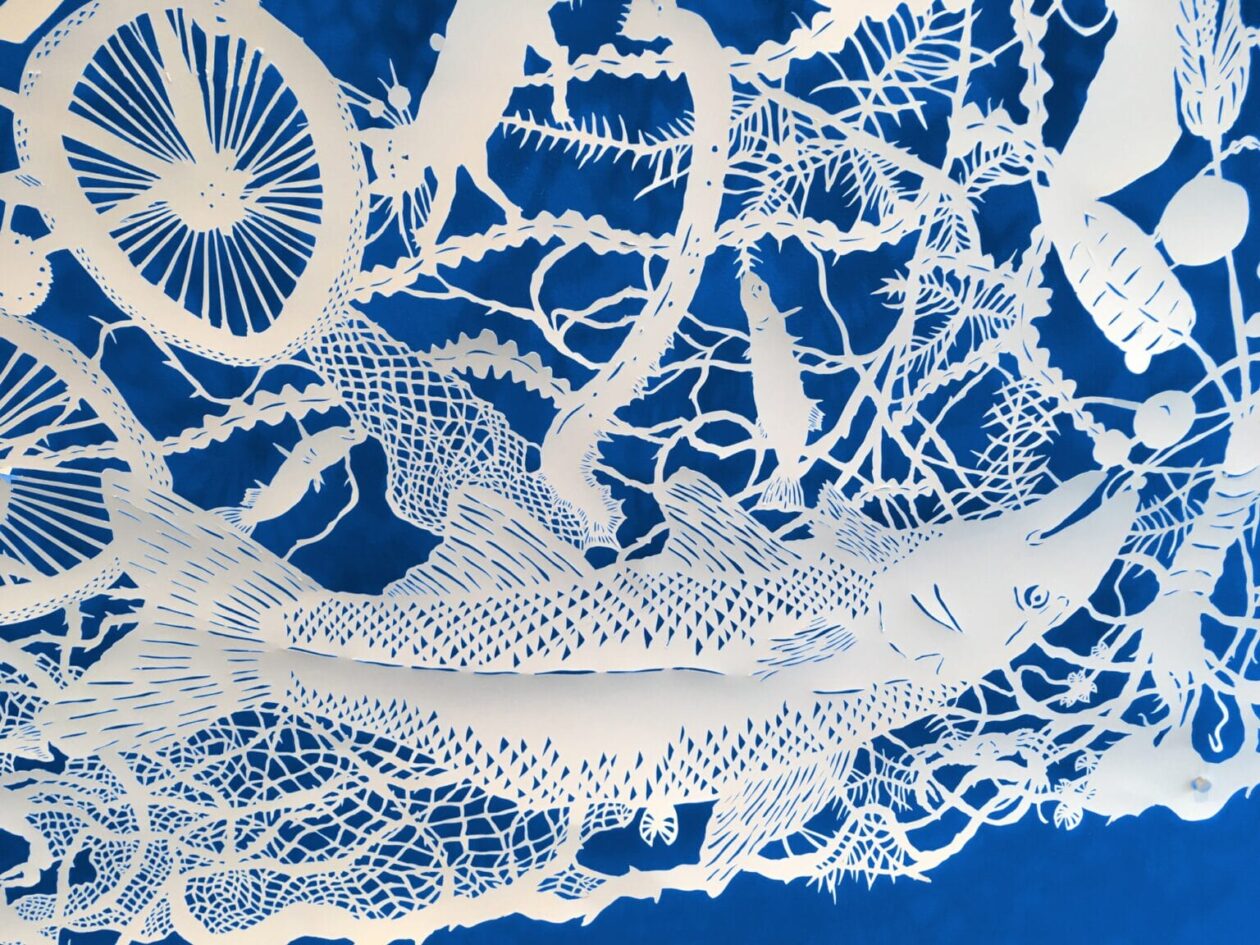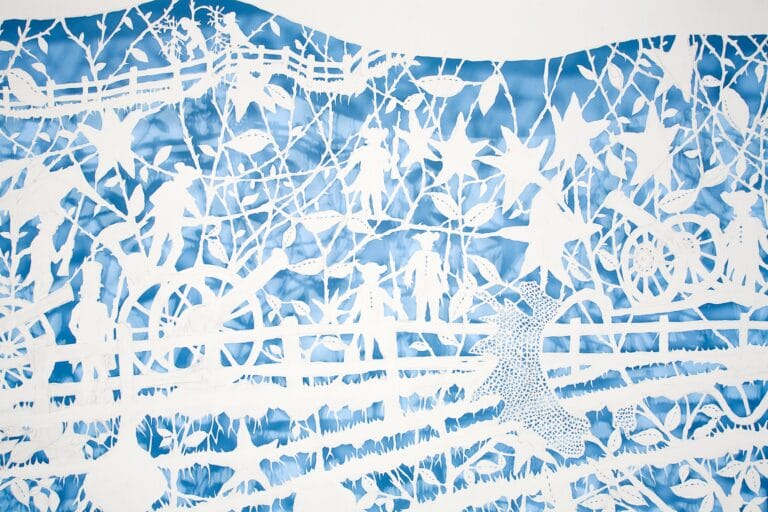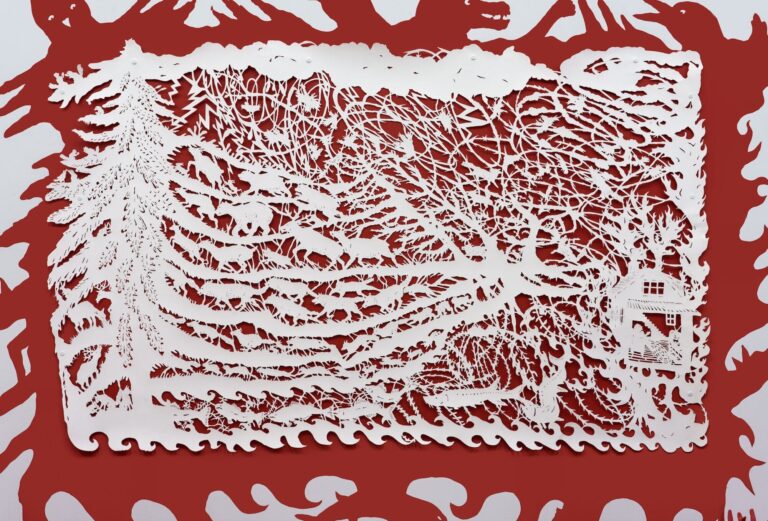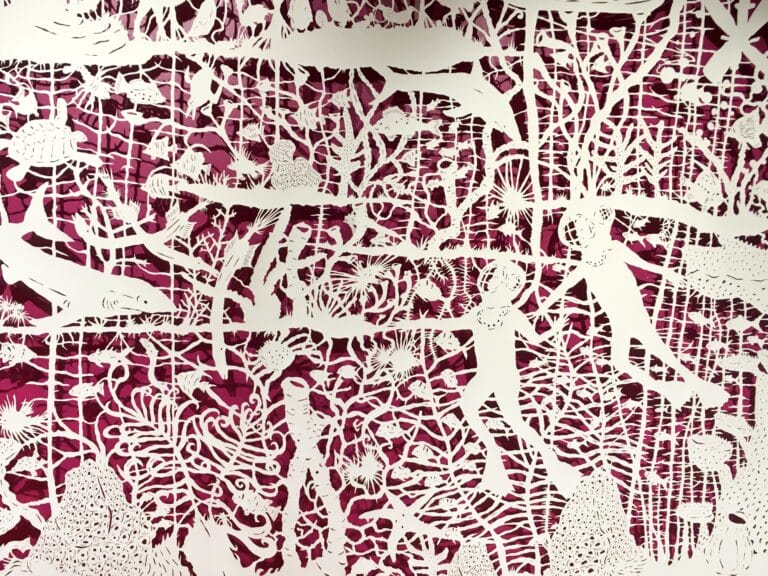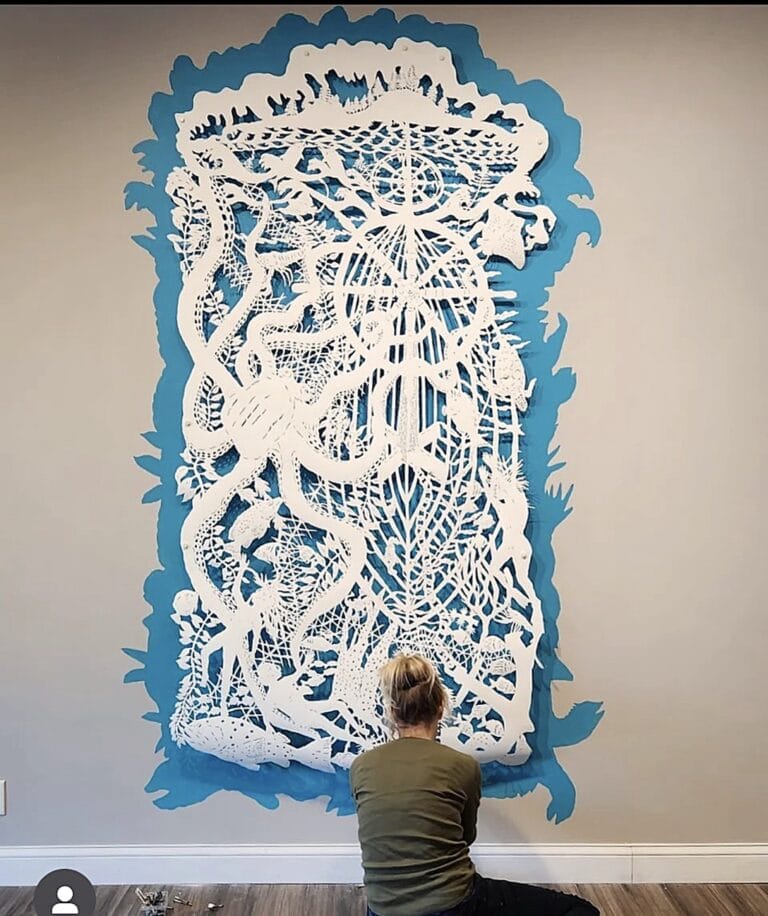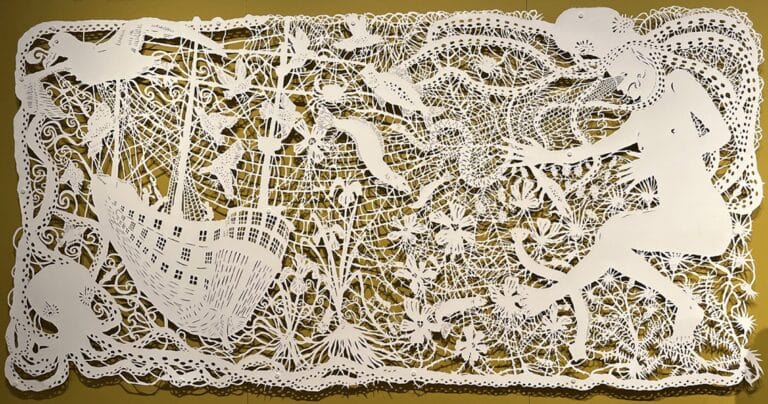In Sonja Peterson’s hands, paper transforms into sprawling ecosystems — delicate latticeworks of flora and fauna that pulse with organic energy. Her intricate cut compositions unfold like biological cross-sections, revealing imagined worlds where roots become neural networks, branches morph into circulatory systems, and every negative space hums with potential life. Peterson wields her blade with the precision of a scientist and the vision of a poet, creating works that feel simultaneously like preserved specimens and living, breathing organisms frozen mid-growth.
The artist’s process mirrors the natural phenomena she depicts — a gradual, methodical accumulation of tiny cuts that coalesce into astonishing complexity. Peterson often works with a single sheet, her subtractive technique revealing how interconnectedness emerges from wholeness. The resulting pieces play with scale and perception: what appears as a microscopic view of cellular structures might suddenly resolve into a forest canopy when viewed from steps back. This duality speaks to her central preoccupation with systems — both ecological and social — and how their fragility belies an inherent resilience. Light becomes an active collaborator in these works, casting ever-changing shadows that make the paper seem to quiver with movement.
Beyond their technical mastery, Peterson’s compositions serve as meditations on coexistence. Species intermingle without hierarchy; fungal networks share space with bird flocks; industrial elements grow organically alongside vegetation. In an age of environmental anxiety, her work offers neither dystopia nor naive optimism, but rather a clear-eyed celebration of nature’s adaptive genius. The very medium — ephemeral paper — becomes part of the message: these are not monuments, but momentary glimpses of balance, as precarious and beautiful as the ecosystems they represent.
